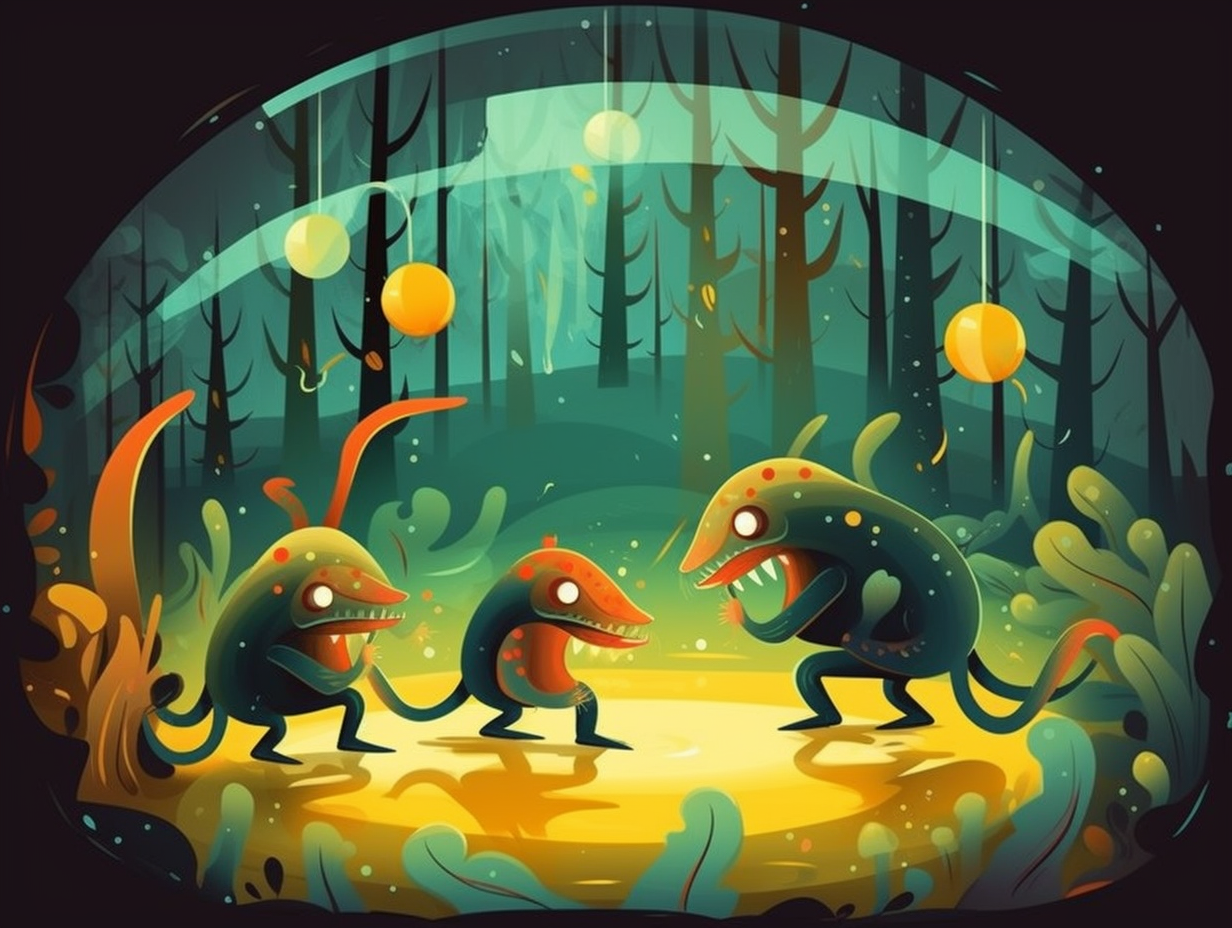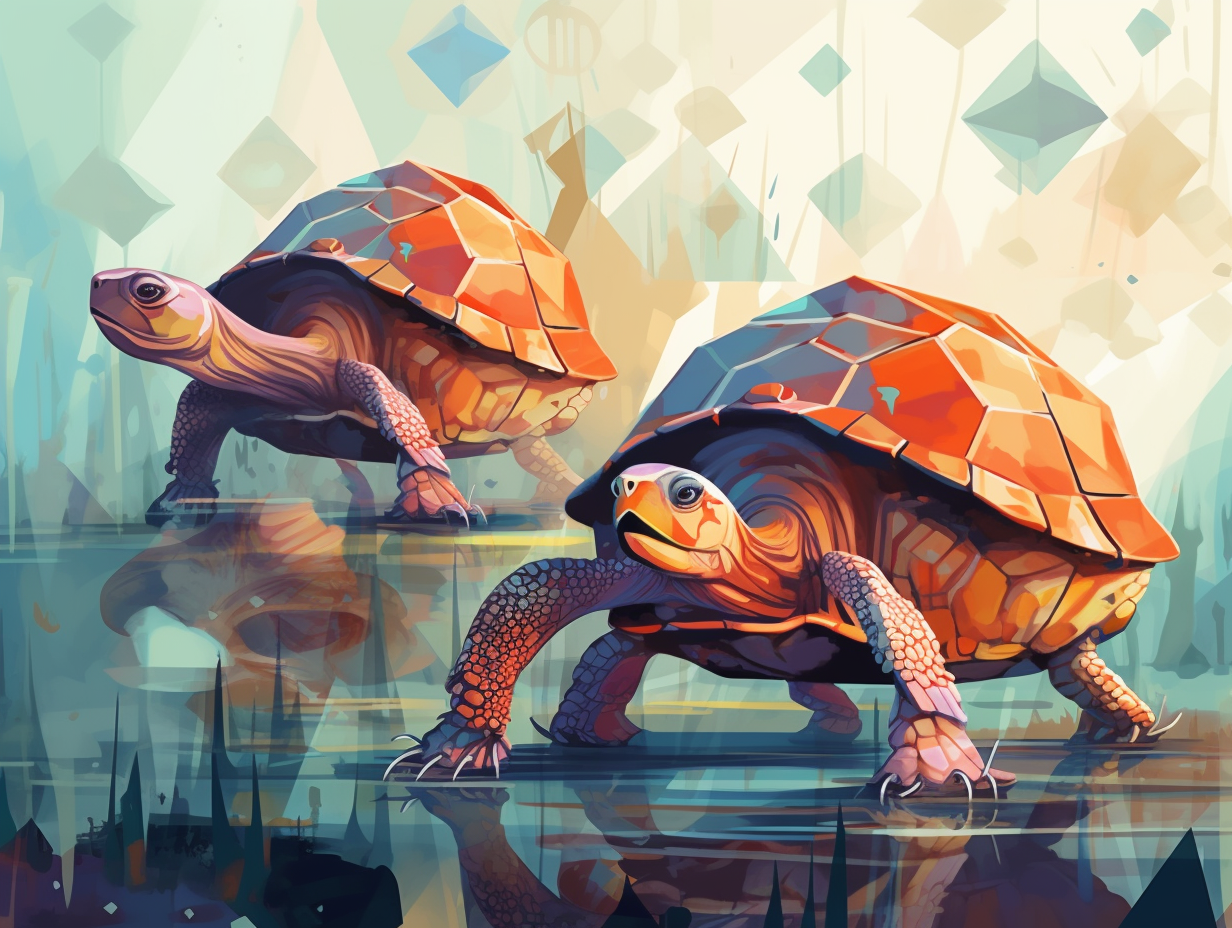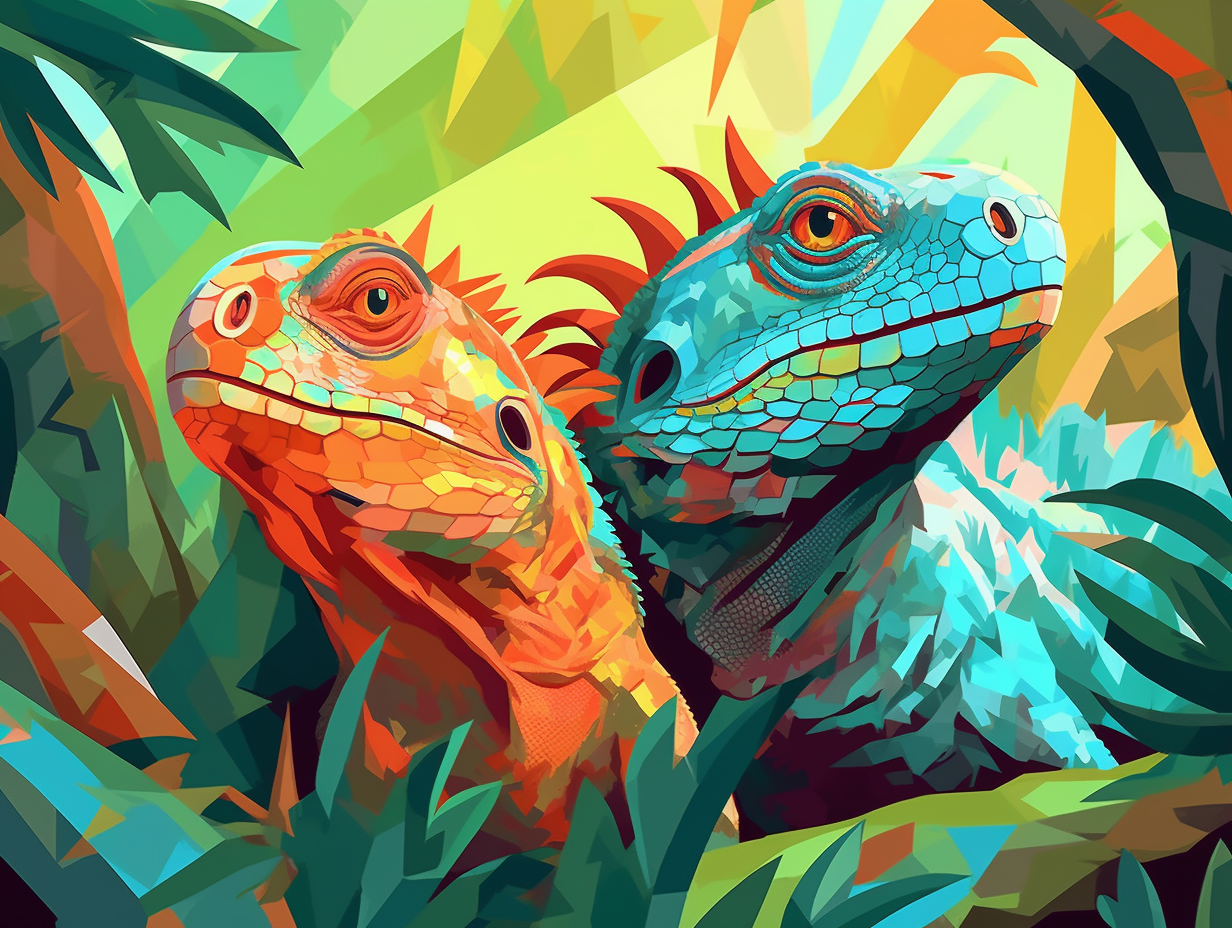Leap into Fun: Discover the Top 25 Fascinating Facts about Frogs!

1. Underwater DJs
Frogs are basically nature's underwater DJs, mixing beats both above and below the surface: Their tympanic membrane, situated behind their eyes, lets them hear in the air and underwater, detecting vibrations and sound waves for optimal hunting and communication in their dual domain.
Source => byjus.com
2. Antibiotic Connoisseurs
Behold the mighty frog, nature's own antibiotic connoisseur: Frogs defend themselves from pesky pathogens by producing antimicrobial peptides in their skin glands, a powerful mechanism that's now being studied for its potential to develop new therapeutic treatments for us humans, but more research on southern African frogs is needed to truly tap into these potential antimicrobial treasures.
Source => scielo.org.za
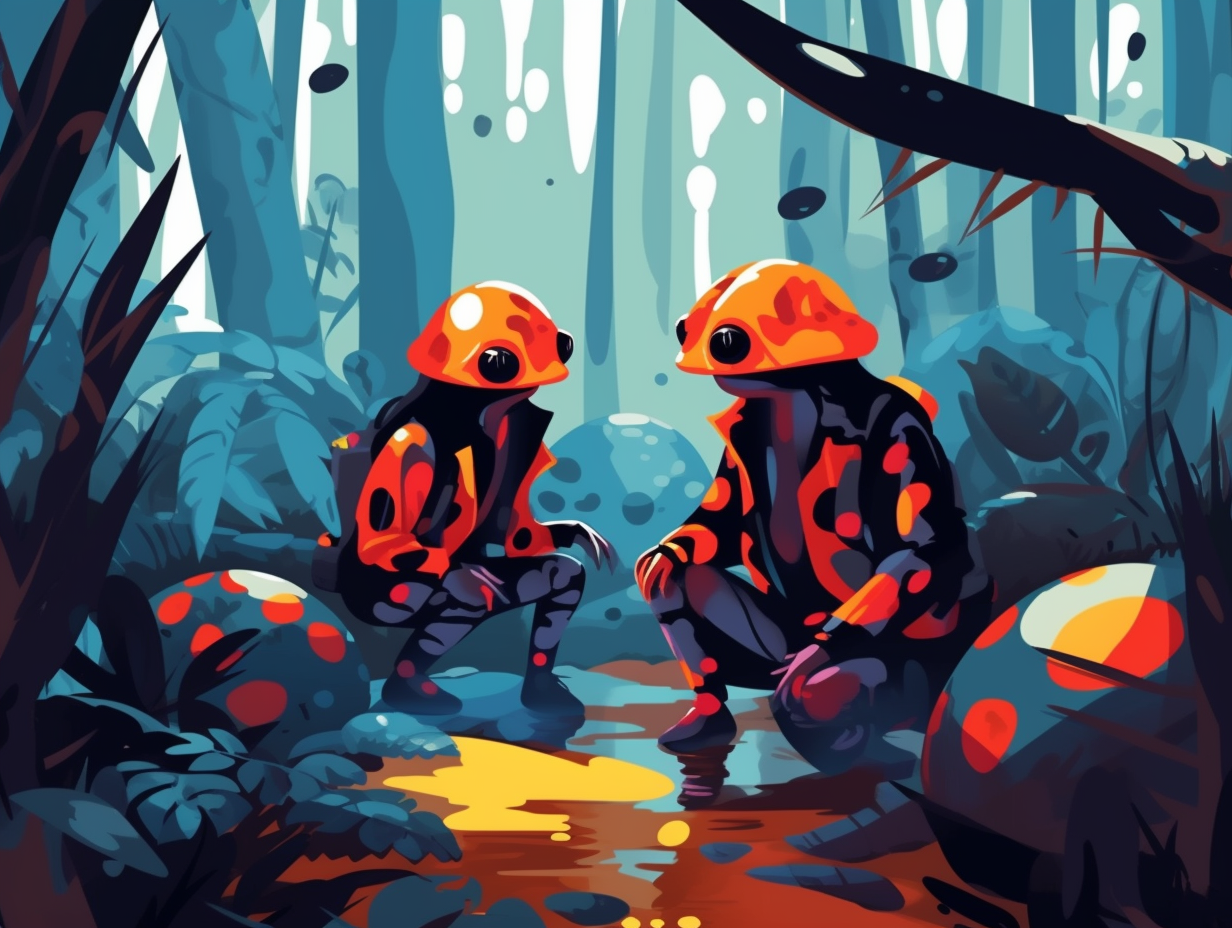
Did you know that poison dart frogs are deadly and beautiful, gaining their toxins from their ant-rich diet? Discover how their vibrant colors serve as a warning to predators and uncover more fascinating facts about these unique amphibians.
=> Fun Facts about Poison-Dart-Frogs
3. Bounce Champions
Forget trampolines and rocket-powered frogs, Mother Nature was way ahead of us in designing the ultimate hopping machine: Froghoppers can jump 70 times their body height with a take-off velocity of four meters per second in just one millisecond! With an acceleration of 4,000 meters per second, these bounce champions outperform every other animal in the kingdom when it comes to generating force relative to body weight.
Source => onekindplanet.org
4. Vegetarian Frogs
In a world where most frogs only dream of a bug buffet, one hero stands out as the champion of the salad bar: The Brazilian Tree frog, a unique vegetarian species, gets its fill with a delightful menu of fruits and berries, unlike its carnivorous counterparts!
Source => burkemuseum.org
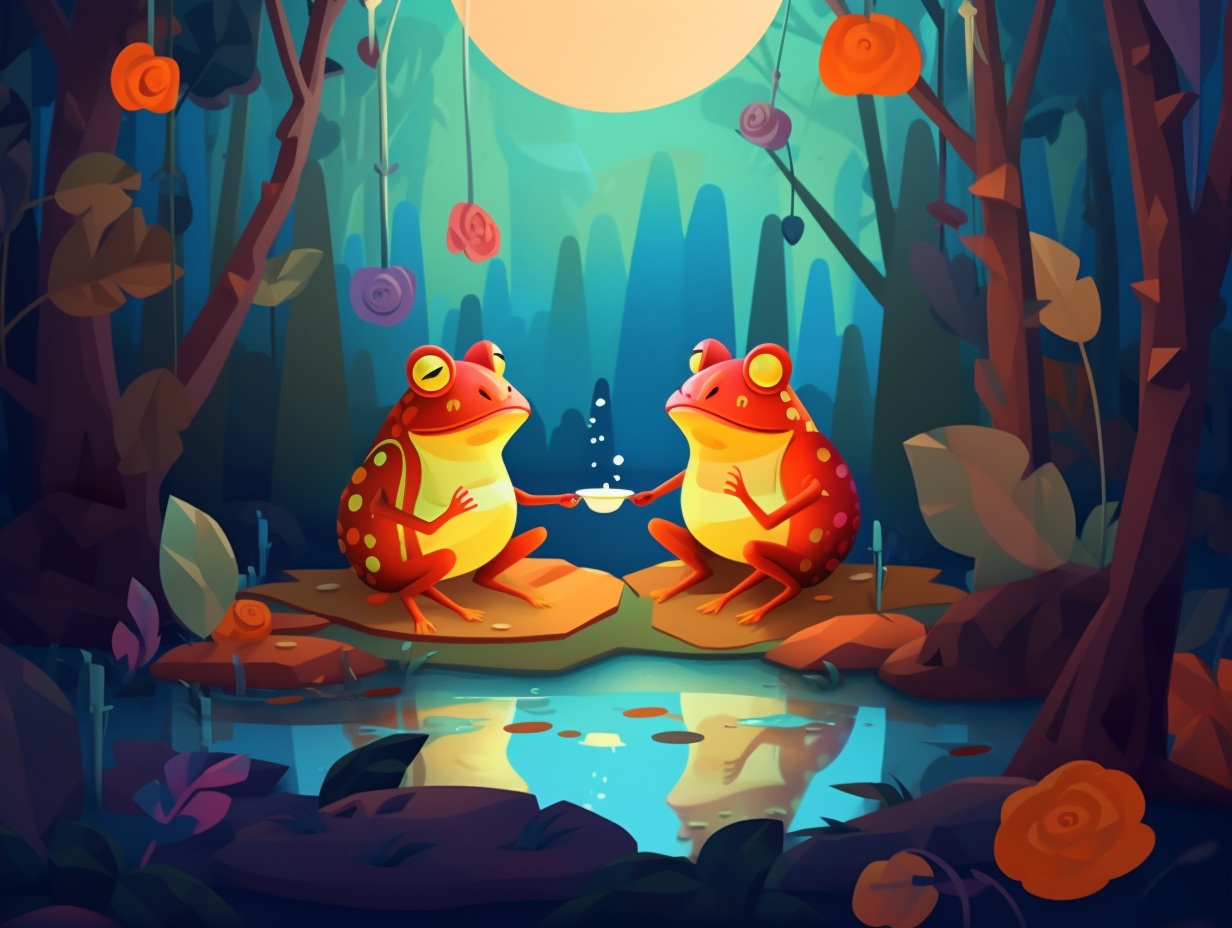
5. Winter Hibernation Ninjas
Winter is coming – but fear not, Jon Snow-frogs: Wood frogs can survive freezing temperatures during winter hibernation by allowing ice to form around their cells and organs while producing high levels of glucose to prevent ice formation inside the cells. This icy superpower lets them survive up to 8 months as frog-sicles, only to thaw and return to life in the spring, hopping towards breeding ponds with no lasting damage.
Source => nps.gov
6. Extreme Makeover: Froggy Edition
If tadpoles had a reality show, it would surely be called "Extreme Makeover: Froggy Edition": From head to toe, cartilage to bone, and greens to gourmet insects, these slimy aquatic stars completely transform their skulls, digestive systems, and tastes as they leap into their adult lives as frogs!
Source => earthrangers.com
7. Invisible Glassfrogs
If you think you've mastered the art of hide-and-seek, the glassfrog begs to differ: This impressively inconspicuous critter can increase its transparency by two- to threefold by stashing 90% of its red blood cells in its liver and utilizing its naturally see-through tissues, making it virtually invisible while it naps amidst the greenery and dodges hungry predators.
Source => nibib.nih.gov
8. Adhesive Toe Pads
In a sticky situation and need a friend who won't let go? Look no further than the midland chorus frog with its toe-tally awesome clingy talents: These little amphibians sport adhesive toe pads, which enable them to grip tenaciously onto vegetation, a characteristic proudly shared with their treefrog cousins in the Hylidae family. While chorus frogs prefer keeping the grass greener on their side, treefrogs are quite the high-climbers, chasing after lofty tree-top dreams.
Source => therouge.org
9. Living Hydration Stations
Who needs a water bottle when you can be a living, breathing, hydration station? Frogs and toads have mastered the art of the thirst-quenching "yoga pose": the water absorption response! This belly-smashin', leg-stretchin' move allows them to soak up water through a special skin area called the seat patch, which, despite occupying a mere 10 percent of their total skin surface, accounts for more than 70 percent of their water intake when parched.
Source => sciencedaily.com
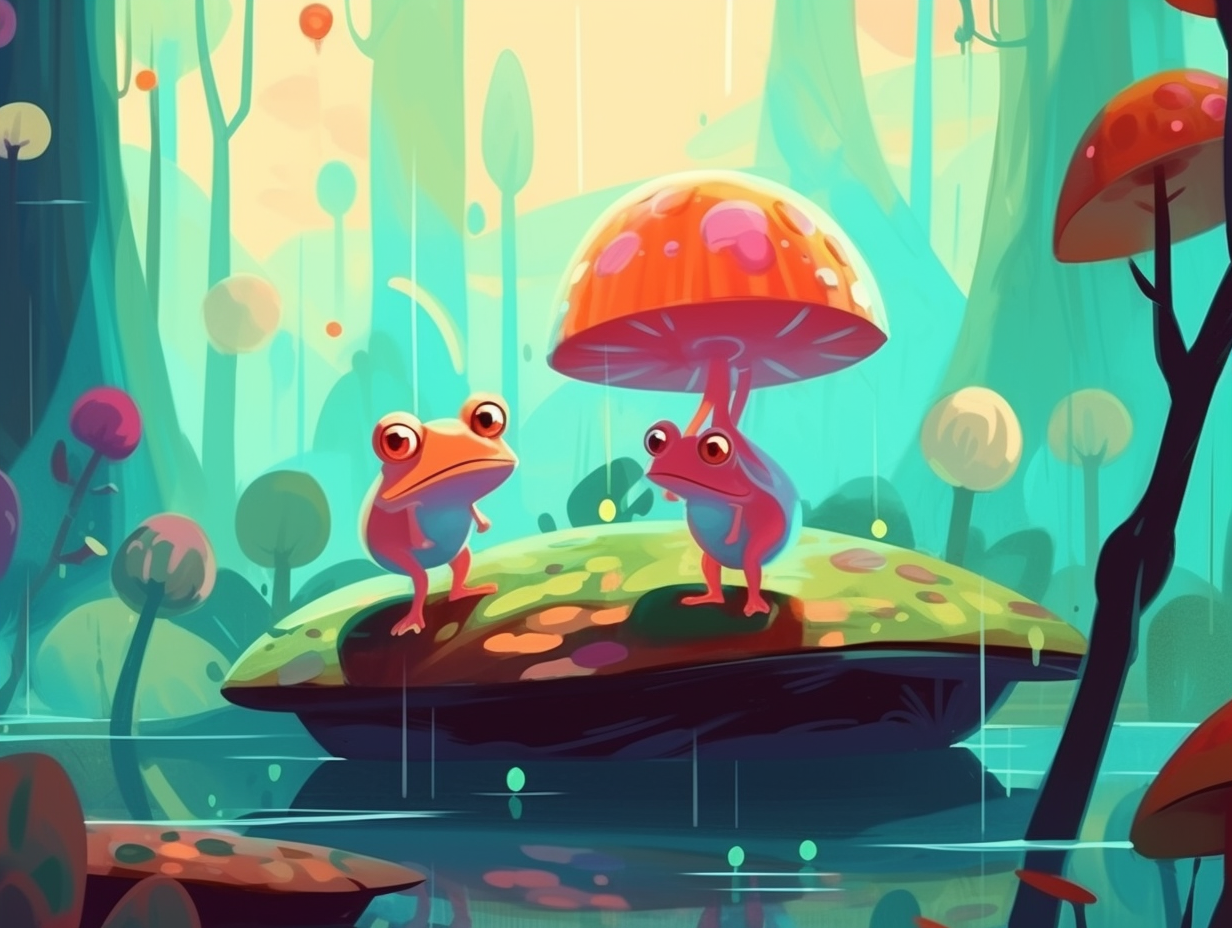
10. Throat Flaunting for Love
Who says frogs can't play a mean game of "Simon Says"? They sure know how to stand out in a crowd, and they're not afraid to show off their "throatal attractions": Some species of male frogs boast brightly colored throats that intensify during breeding season, used for courtship and attracting female frogs. These marvelous throat shades can range from brighter to darker than their female counterparts, with some even revealing flashy markings during vocal-sac expulsions while calling.
Source => researchgate.net
11. Cannibalistic Tadpoles
If you thought sibling rivalries were intense, have you met the ferocious tadpoles? It's a swim-eat-swim race out there: Turns out that tadpoles can be cannibalistic when food is scarce or competition is high, but they won't necessarily choose their brethren over other chow, as brine shrimp still proves to be a better meal option, helping them grow and develop faster. Their amphibian Hunger Games might escalate as climate change proceeds to drain their Canadian pond arenas.
Source => scientificamerican.com
12. Vertical Climbing Masters
Next time you're struggling to climb the corporate ladder, remember there's a frog out there who's far better equipped: tree frogs have special pads on their toes that allow them to climb vertical surfaces, and the Costa Rican flying tree frog takes this skill up a notch by leaping between trees, using its hind legs for climbing power and toe webbing like a parachute to stay aloft.
Source => animals.mom.com
13. Toxic Night-time Show-offs
Even Kermit would be green with envy: some frog species, such as those in the Dendrobates and Phyllobates genus, prefer the nightlife at a hop, opting to spend their days flaunting their technicolor skins packed with toxins to deter predators.
Source => a-z-animals.com
14. Breathing Easy with Red Eyes
Frogs with red peepers give new meaning to the phrase "breathing easy" and could teach Spider-Man a thing or two: Red-eyed tree frogs breathe through their skin and have suction-like pads on their toes, which help them climb wet surfaces, deftly balancing on leaves and branches high up in the trees.
Source => bioweb.uwlax.edu
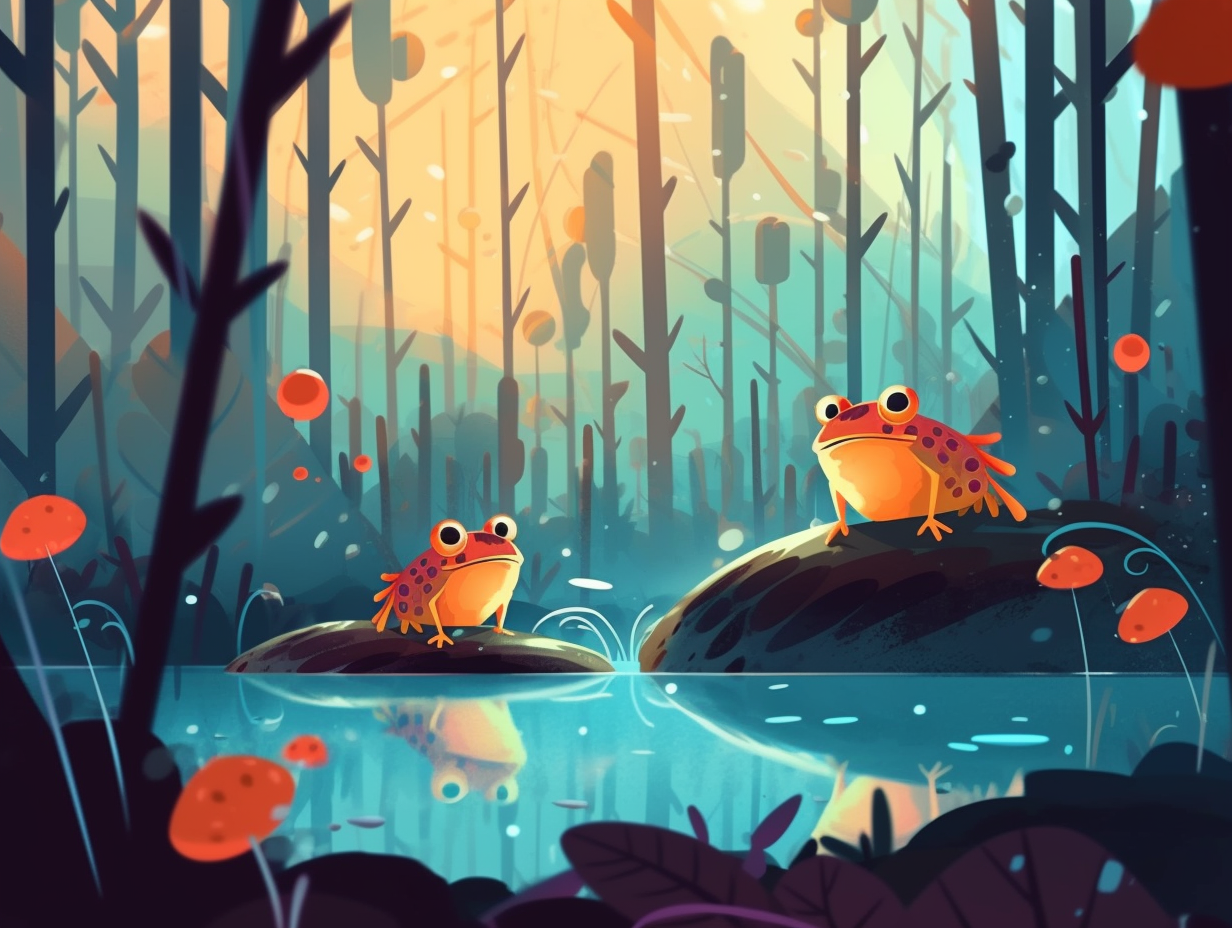
15. Food-Swallowing Peepers
Move over, Marty Feldman, frogs are the new "eye" con of comedy: Frogs use their bulging eyes to see almost 360 degrees around them, and when it's time to dine, they retract their peepers into their mouths to aid in swallowing their food.
Source => amnh.org
16. Nuptial Wingmen
While frogs aren't exactly swiping right on Tinder, they sure know how to make a lasting impression with their special nuptial "wingman": Male frogs evolve spiny and rough nuptial pads on their thumbs and arms during mating season, which help them grip the female during amplexus and release pheromones to stimulate egg production.
Source => onlyzoology.com
17. Frog-a-chute Gliders
Forget parachutes, let's frog-a-chute: Wallace's flying frogs, also known as parachute frogs, can glide through the air up to 50 feet thanks to loose skin flaps on their sides, membranes between their toes, and specialized webbed feet!
Source => nationalgeographic.com
18. King of Leaps
You've heard of Air Jordan, but have you met the true king of leaps – the Amphibious Air South African Sharp-Nosed Frog? This tiny jumper's got moves that would leave even the most athletic bullfrog sipping tea in envy: The South African Sharp-Nosed Frog holds the Guinness World Record for jumping the farthest distance relative to its body size, whopping leaps of 95 times its own length, while the American bullfrog manages a mere 10 times its body length in comparison.
Source => mramphibian.com
19. Edible Neon Diet
Ever tried eating a rainbow and ended up with a toxic surprise? Fear not, for the frogs at Zoo Atlanta have mastered the art of edible neon: While wild poison dart frogs secrete a deadly toxin due to their diet of formicine ants and other small invertebrates, the ones at Zoo Atlanta are kept on a secret diet of fruit flies, crickets, springtails, and bean beetles, making them safe for zookeepers to handle without fear of being poisoned.
Source => zooatlanta.org
20. Toad Compasses
What do European Common Toads and compasses have in common? Both can point their way to true North! No froggy-GPS needed: The European Common Toad (Bufo bufo) can actually orient itself using Earth's magnetic field, allowing them to find their way back to their breeding pond along their migration route. In fact, when scientists reversed the magnetic field in an experiment, these amphibious navigators changed their bearings, hinting at a possible conflict between magnetic and celestial cues.
Source => ncbi.nlm.nih.gov
21. Amphibious Ice Cubes
While the average human resorts to layers of clothing and cranking up the heating to combat freezing temperatures, frogs have mastered the ultimate cold weather party trick: they simply turn themselves into little amphibious ice cubes! The serious reveal: These incredible creatures survive frozen conditions by producing a natural antifreeze, enabling them to enter suspended animation until warmer temperatures thaw them out, proving that frogs truly have evolved some "cool" adaptations to thrive in various environments.
Source => link.springer.com
22. Inflatable Defense
When life gives Budgett's frogs lemons, they puff up like overambitious party balloons: As their distinctive defense mechanism, these quirky amphibians inflate their bodies with air when they face a potential threat, transforming into a more intimidating size that can scare off predators.
Source => dwazoo.com
23. Underwater Serenades
When love is in the air, male frogs aren't just singing in the rain; they're belting out a symphony of underwater serenades in search of their true ribbit: Male frogs, such as the threatened California Red-legged Frog, communicate their size and hormone levels via acoustic signals during breeding season, attracting females of the same species. With heads above water and bodies submerged, they create a series of grunts and belch-like notes using dual vocal sacs. Scientists in Baja California, Mexico, are using automated recorders to capture these unique calls, providing insight into the species' reproductive behavior and overall health.
Source => sdnhm.org
24. Egg-laying Styles
Froggy families prefer a grape-licious lifestyle, while toads march to the beat of their own stringy tune: Frogs lay their eggs in clusters mimicking grape bunches and toads lay them in lengthy chains encased in clear jelly, all to cleverly cling to underwater real estate and boost their chances of survival.
Source => animals.mom.com
25. Hulk-like Goliath Frogs
Picture the Incredible Hulk of the frog world: all green muscle, ready to jump skyscrapers in a single bound! Alas, even amphibious superheroes are not safe from our planet's kryptonite: The goliath frog, weighing up to 7 pounds and measuring over a foot long, is now endangered due to human activities such as hunting and habitat destruction. Conservation efforts are being put forth to protect these colossal croakers and secure the future of their ribbiting bloodline.
Source => animals.sandiegozoo.org
Related Fun Facts




